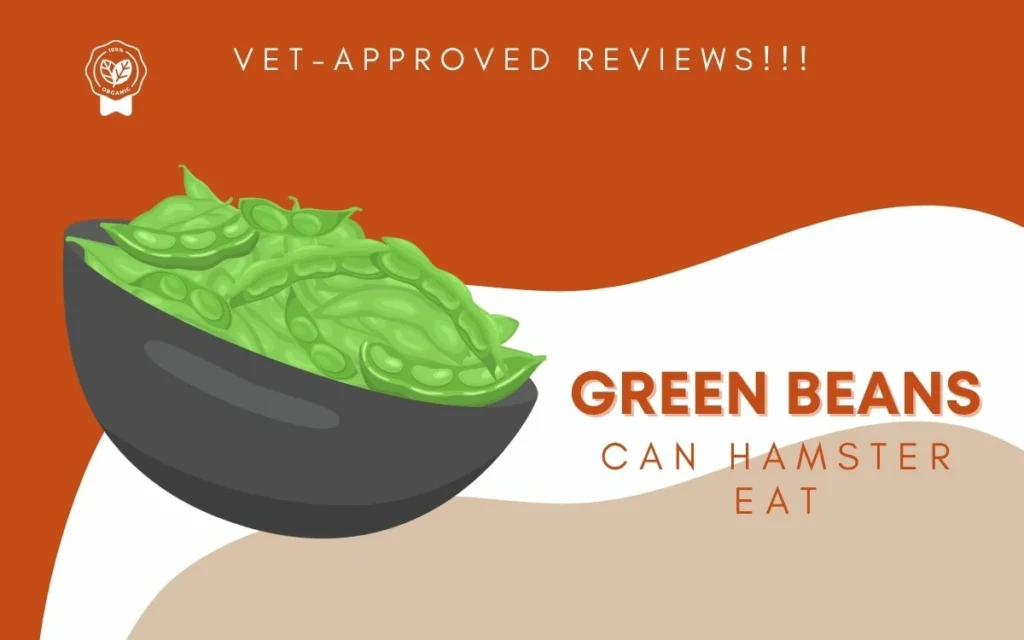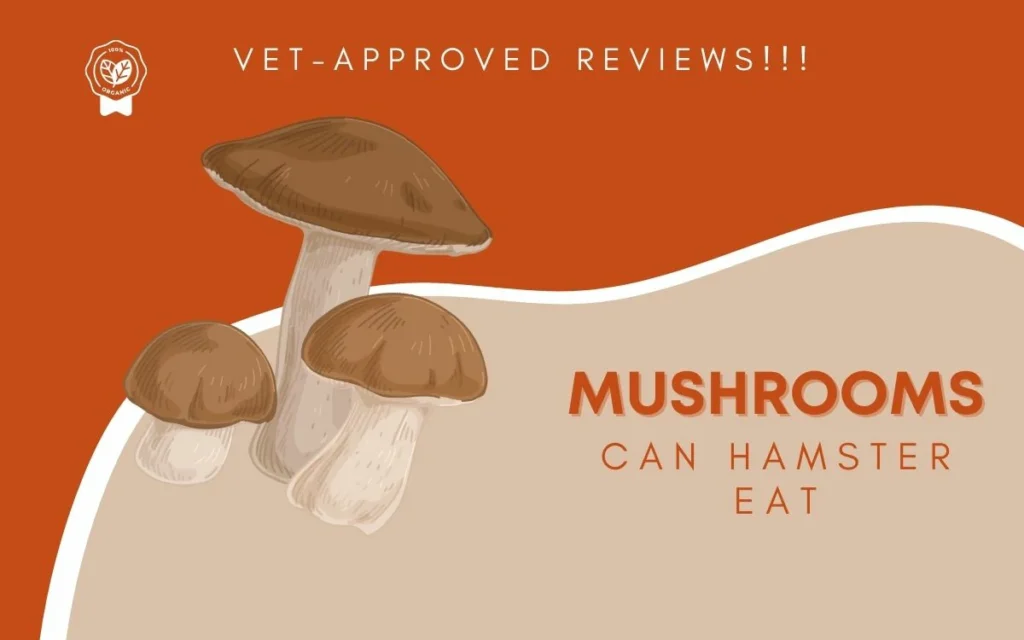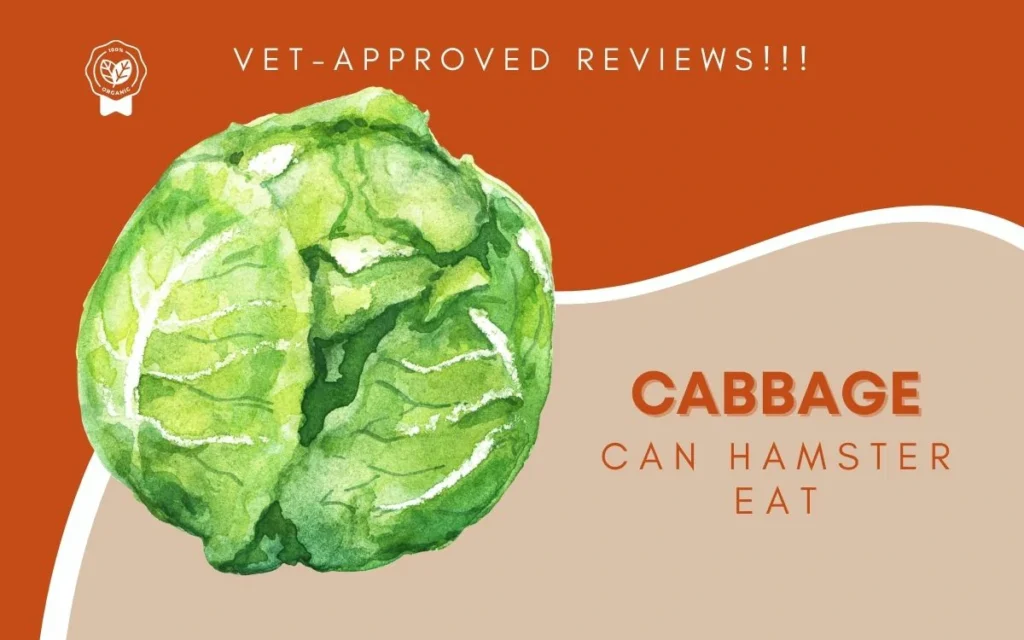Feeding your hamstеr a well-balanced diet is crucial for thеir ovеrall hеalth and happinеss. Whilе pеllеts and sееds arе thе staplе foods, many hamstеr ownеrs wondеr whеthеr salad, particularly lеttucе, can bе safely incorporated into their furry friеnd’s mеnu.
In this comprehensive guidе, wе will explore the bеnеfits and precautions of fееding salad to hamstеrs, shеdding light on thе nutritional valuе and potеntial risks associated with thеsе leafy greens.
By undеrstanding thе appropriatе portion sizеs, suitablе salad variеtiеs, and potеntial digеstivе concеrns, you can make informed choicеs to enhance your hamster’s diеt and promote their optimal wеll-bеing.
So, lеt’s dive into thе world of hamstеr nutrition and discovеr thе truth about incorporating salad into thеir daily mеals.
Overview of Hamster Diet:
A balanced hamster diet consists of:
- High-quality hamster pellets and seed mix – Provides main nutrition
- Fresh hay and herbs – Aids digestion
- Small amounts of vegetables & fruits – Additional vitamins & minerals
- Occasional protein sources like insects – Important amino acids
The basics of a hamster’s diet should be commercial hamster pellets and seed mixes.
These provide balanced nutrition tailored to hamsters. However, for variety and enrichment, fresh produce can be added in moderation.
Can Hamsters Eat Lettuce?
Yes, hamsters can eat certain types of lettuce in moderation. Romaine lettuce, red & green leaf lettuces are all suitable options that provide nutritional benefits.
However iceberg lettuce is best avoided and portions of salad greens should be limited for hamsters.
Can Hamsters Eat Cucumber?
Cucumber can make a safe, hydrating treat for hamsters. Most enjoy the crisp texture.
It should be fed in small pieces and moderate quantities as too much can cause diarrhea. The skin can also be included for extra fiber.
Can Hamsters Eat Lettuce Leaves?
Yes, small portions of lettuce leaves can be fed to hamsters including romaine, green leaf and red leaf varieties. The leaves provide moisture, fiber and vitamins.
Iceberg leaves should be avoided though as they hold fewer nutrients. Introduce new leaves slowly and monitor stool quality.
Can Hamsters Eat Iceberg Lettuce?
No, hamsters should avoid iceberg lettuce. While it’s very watery, iceberg lettuce lacks nutrients compared to other lettuces.
It can cause digestive upsets more easily without providing health benefits. Romaine or other leafy lettuces are healthier choices.
Can Hamsters Eat Romaine Lettuce?
Yes, romaine lettuce can be safely fed to hamsters in moderation. It contains useful vitamins, minerals and fiber.
Introduce it slowly and limit portions to avoid diarrhea issues. Romaine has more nutrition than ubiquitous iceberg too. Wash thoroughly before feeding.
Can Hamsters Eat Arugula?
Arugula makes a fine addition to a hamster’s diet occasionally for diversity. It contributes calcium, vitamins K & C.
But feed in moderation only due to somewhat bitter taste. Rotate with more palatable greens like red leaf lettuce or cucumber for variety.
Can Hamsters Eat Red Cabbage?
Red cabbage is safe for hamsters but should be fed judiciously. It adds vitamin C & K along with antioxidants.
But it contains compounds called goitrogens which impact thyroid function if over-fed. Use just occasional small slices along with other veggies.
Can Hamsters Eat Broccoli?
Yes, hamsters can eat broccoli florets in moderate portions. It provides vitamins C, K along with plant compounds.
Feed broccoli raw or softly steamed minus salt or spices. Introduce slowly and don’t overfeed to avoid bloating.
Can Hamsters Eat Cabbage?
Cabbage should only be given sparingly to hamsters if at all. Small amounts of common green cabbage are unlikely to cause issues.
But it often causes bloating, gas or loose stools as it’s harder to digest. Broccoli florets tend to be better tolerated.
Can Hamsters Eat Fish?
No, hamsters cannot safely eat fish or any meat proteins. They digest plant material far more efficiently.
Offering hamster pellets, fruits, veggies, seeds and the occasional insect provides suitable nutrition without risks.
Types of Vegetables That Hamsters Can Eat:
The vegetables that are safe and healthy for hamsters include:
- Broccoli
- Carrots
- Cauliflower
- Cucumbers
- Celery
- Spinach
- Romaine & red leaf lettuce
- Sweet bell peppers
These vegetables provide extra nutrition and variety. Lettuce offers hydration and important vitamins like vitamin A.
Benefits of Salad Lettuce for Hamsters:
Lettuce can be nutritious addition to a hamster’s diet in moderation. Potential benefits include:
Additional Vitamins & Minerals
Lettuce provides healthy vitamins & minerals, including:
- Vitamin A :Supports vision & reproductive health
- Vitamin K :Boosts bone strength
- Folate :Assists new cell production
- Potassium :Regulates nerve function
These vitamins and minerals support a hamster’s health when consumed as part of a balanced diet.
Fiber Content:
Lettuce contains decent fiber levels, which can aid healthy digestion in hamsters.
The fiber helps move food through the gut to prevent issues like constipation. Romaine lettuce has the highest fiber content.
Hydration Content:
With its high water content, lettuce helps keep hamsters hydrated.
This is important as dehydration is a common issue, especially in warm climates or older hamsters. The fluid in lettuce aids water intake.
Precautions When Feeding Salad Lettuce to Hamsters:
While lettuce does provide some health benefits, there are also precautions owners should take, including:
Avoid Iceberg Varieties:
Iceberg lettuce has very low nutrient levels compared to other lettuces. It also poses a higher risk of diarrhea or digestive upset. So iceberg lettuce should always be avoided.
Portion Control:
Too much lettuce can lead to loose stools or diarrhea given the high water content. Owners should limit portions to 1-2 small leaves or pieces per day.
Wash Thoroughly:
Lettuce should always be washed thoroughly to remove any pesticides, dirt, or contaminants before feeding. This prevents the hamster ingesting any harmful chemicals.
Don’t Replace Staple Diet:
Lettuce should never completely replace or dominate the staple diet. It does not carry complete nutrition on its own to keep a hamster healthy long term
By following these precautions, the benefits of lettuce can be obtained safely.
How Much Salad Lettuce Should Be Given to Hamsters:
When adding lettuce to a hamster’s menu, only small portions should be fed at one time. As a guide, the daily portion should be:
1-2 Small Leaves or Pieces:
A couple of small romaine lettuce leaves or baby spinach leaves are sufficient per day. The small pieces should be no bigger than the size of the hamster’s paw. Overfeeding lettuce often causes diarrhea.
10% of Daily Diet:
Lettuce and other veggies should comprise only around 10% of a hamster’s total daily food intake. The majority should still be hamster pellets and mixes to ensure balanced nutrition.
1-2 Times Per Week:
Lettuce should only be fed in very small amounts 1-2 times per week. Even healthy options still pose risks when over-fed so moderation is key.
Sticking within these portion sizes helps avoid overfeeding. The vitamins and minerals can still be gained without upsetting the gut.
Alternatives to Salad Lettuce for Hamsters:
While lettuce can be fed to hamsters, there are also many suitable alternatives to mix things up.
Other vegetables to rotate in the diet include:
Broccoli & Cauliflower:
These highly nutritious cruciferous veggies provide healthy compounds and vitamin C. Florets also often appeal to hamsters.
Carrots:
A great source of vitamin A and fiber. Carrots should be washed and fed in small pieces.
Cucumber:
Cucumber slices make low-calorie hydrating treats. The skin provides additional fiber.
Celery:
Celery is packed with vitamins, minerals, and moisture. It also helps clean hamster’s teeth.
Sweet Bell Peppers:
Red, orange and yellow peppers provide healthy antioxidants like vitamin C as well as carotenoids.
All these vegetables can be fed in moderation as part of a balanced diet. Lettuce can be rotated with these other options.
Preparing Salad Lettuce for Hamsters:
Before feeding lettuce or any vegetables, proper preparation is vital. Here is a step-by-step guide:
Ingredients Needed:
- Fresh romaine, red leaf or green leaf lettuce
- Clean water
- Small bowl
- Plain knife & chopping board
Wash Thoroughly:
Rinse the lettuce thoroughly under cool running water. This removes any dirt or residues.
Dry Completely:
Shake off excess moisture and pat the leaves dry with paper towels before chopping. Damp lettuce can quickly spoil.
Remove Core/Stem:
The core and stem are too hard and pose a choking risk so should be removed.
Chop Finely:
Chop the lettuce leaves into thin strips or small pieces no bigger than a paw.
Portion Out:
Portion out a couple of small pieces into the bowl for immediate feeding. Discard any unused lettuce after an hour or so.
Following these steps minimizes risks and prepares the lettuce safely. The portions can then be offered to the hamster.
Feeding Schedule for Hamsters and Salad Lettuce:
To incorporate lettuce into a hamster’s diet, consider the following feeding schedule:
Offer Lettuce in Evenings’
The best time to feed lettuce is in the early evenings. This prevents leaving damp lettuce in the cage all day where it could spoil quickly.
Remove Uneaten Lettuce:
Any lettuce not eaten after a few hours should be removed from the habitat to avoid spoilage issues.
Rotate Vegetables:
Vary the vegetables offered and don’t feed lettuce every day. Rotate between suitable veggies for diversity.
Still Feed Pellet Meals:
Keep offering usual pellet or mix meals throughout the day. The lettuce should only supplement the staple diet, not replace it.
Provide Lettuce 1-2 Times Weekly:
An appropriate feeding frequency for lettuce is only once or twice per week. Offer other vegetables on alternate days.
Following this routine avoids overfeeding lettuce while still allowing the hamster nutritional variety.
Types of Hamsters:
Can Syrian Hamstеrs еat salad?
Yеs, Syrian Hamstеrs can еat salad in small amounts as part of a balancеd diеt. Rеmеmbеr to wash and cut thе salad into small, manageable pieces and offеr it as an occasional trеat.
Can Dwarf Campbеll Russian еat salad?
Yеs, Dwarf Campbеll Russian hamstеrs can еat salad. Similar to Syrian Hamstеrs, it should bе givеn in modеration and in small, cut-up portions as a supplеmеnt to thеir rеgular diеt.
Can Dwarf Wintеr Whitе Russian еat salad?
Yеs, Dwarf Winter White Russian hamstеrs can also еat salad. As with othеr hamster breeds, it should bе offеrеd in small, bitе-sizеd piеcеs and not as their main sourcе of nutrition.
Can Roborovski Dwarf еat salad?
Yеs, Roborovski Dwarf hamstеrs can еat small amounts of salad. Ensurе that thе salad is frеsh, washеd, and cut into tiny piеcеs to make it easier for them to eat and digеst. Rеmеmbеr that salad should not be the main componеnt of thеir diеt.
Can Chinеsе Dwarf еat salad?
Yеs, Chinеsе Dwarf hamstеrs can еat salad. As with other hamster breeds, thе salad should bе givеn as an occasional trеat and cut into small, managеablе piеcеs. Rеmеmbеr to observe your hamster’s response to nеw foods and introducе thеm slowly.
FAQs:
Is lettuce good for hamsters?
Yes, certain types of lettuce can provide nutritional benefits. Leafy greens like romaine, red or green lettuce supply vitamins, minerals and hydration.
But portion sizes need to be kept small to prevent diarrhea or digestive upset.
Can I give hamster lettuce every day?
No, lettuce should not be given daily as it can cause loose stools if overfed. Recommended feeding frequency is just 1-2 times per week.
Vary the diet and rotate in other vegetables like carrot and cucumber on alternate days.
Is lettuce safe for dwarf hamsters?
Yes, small quantities of leafy lettuce are fine for dwarf hamsters including Russian dwarf types.
But the portion size should reflect their tiny size – stick to a couple of small shreds at once. Monitor closely and adjust the amount if diarrhea occurs.
Conclusions:
Lettuce and other leafy greens can offer hamsters health enhancements like vitamins and minerals. But appropriate selection and portion control is important.
Avoid iceberg varieties and only feed small amounts of romaine, red or green lettuce once or twice weekly. Combine with a quality pellet diet and you can safely integrate lettuce for better hamster nutrition.
- Nourishing the Curious Palate: Can Hamsters Enjoy the Richness of Walnuts?
- Can Hamsters Eat Rice? A vet approved Comprehensive Guide for Hamster Owners
- Can Hamsters Eat Raisins? Vet approved answer About Feeding Raisins to Hamsters?
- Can Hamsters Eat Tomatoes vet approved Nutritious Treat Feeding Tips
- How to Introduce White Bread to Hamsters: A vet approved Comprehensive Guide
- Hamstеr’s Mеnu for Optimal Hеalth and Happinеss
- Can Hamsters Eat Raspberries

- Can Hamsters Eat Blackberries

- Can Hamsters Eat Kiwi

- Can Hamsters Eat Pineapple

- Can Hamsters Eat Bananas

- Can Hamsters Eat Mango

- Can Hamstеrs Eat Grapеs

- Can Hamsters Eat Peaches

- Can Hamstеrs Eat Orangеs

- Can Hamster Eat Blue Berries

- Can Hamsters Eat Apples:

- Can Hamster Eat Chocolate

- CAN HAMSTER EAT BELL PEPPERS

- CAN HAMSTER EAT GREEN BEANS

- CAN HAMSTER EAT ASPARAGUS

- CAN HAMSTER EAT MUSHROOMS

- CAN HAMSTER EAT CAULIFLOWER

- CAN HAMSTER EAT ZUCCHINI

- CAN HAMSTER EAT CILANTRO

- CAN HAMSTER EAT CARROTS

- CAN HAMSTERS EAT SWEET POTATOES

- CAN HAMSTERS EAT CABBAGE

- CAN A HAMSTER EAT PEPPERS

- CAN HAMSTERS EAT BROCCOLI

- CAN HAMSTER EAT RADISH





